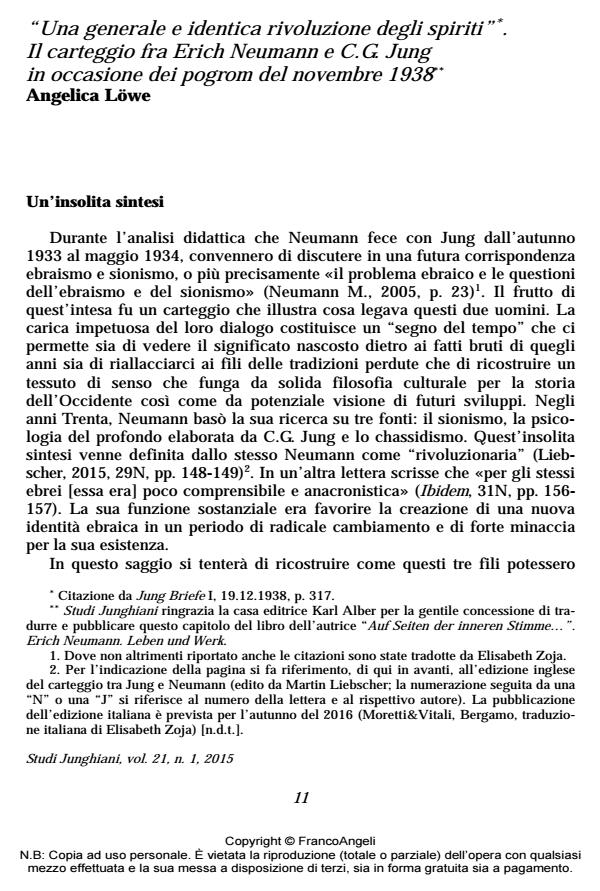The correspondence between Erich Neumann and C.G. Jung on the occasion of the November pogroms, 1938
Journal title STUDI JUNGHIANI
Author/s Angelica Lowe
Publishing Year 2015 Issue 2015/41
Language Italian Pages 15 P. 11-25 File size 75 KB
DOI 10.3280/JUN2015-041003
DOI is like a bar code for intellectual property: to have more infomation
click here
Below, you can see the article first page
If you want to buy this article in PDF format, you can do it, following the instructions to buy download credits

FrancoAngeli is member of Publishers International Linking Association, Inc (PILA), a not-for-profit association which run the CrossRef service enabling links to and from online scholarly content.
This essay deals with the correspondence between Erich Neumann, Jung’s best known and most important student, and C.G. Jung, and situates this correspondence within the context of the November pogroms of 1938. A detailed analysis of four letters, two by Neumann and two by Jung, shall shed light on the question to what extent the incipient murder of the Jews becomes the nervus probandi of the relationship between Neumann and Jung. Neumann’s reflection about the collective Jewish determination in the face the Novemberpogroms 1938, brings Jung to an alleviative relativization and secularization of his former position. This precipitates a deep crisis and feelings of disorientation and desertion in Neumann; a negative father complex is constellated, discharged in a dream. Moreover the analysis traces how certain culturetheoretical assumptions are undermined in the face of the impending catastrophe.
Keywords: Jung-Neumann-correspondence, Jung’s ethnospecific differentiation of the unconscious, November pogroms 1938, Jung’s self-correction, Neumann’s dream.
Angelica Lowe, "Una generale e identica rivoluzione degli spiriti". Il carteggio fra Erich Neumann e C.G. Jung in occasione dei pogrom del novembre 1938 in "STUDI JUNGHIANI" 41/2015, pp 11-25, DOI: 10.3280/JUN2015-041003